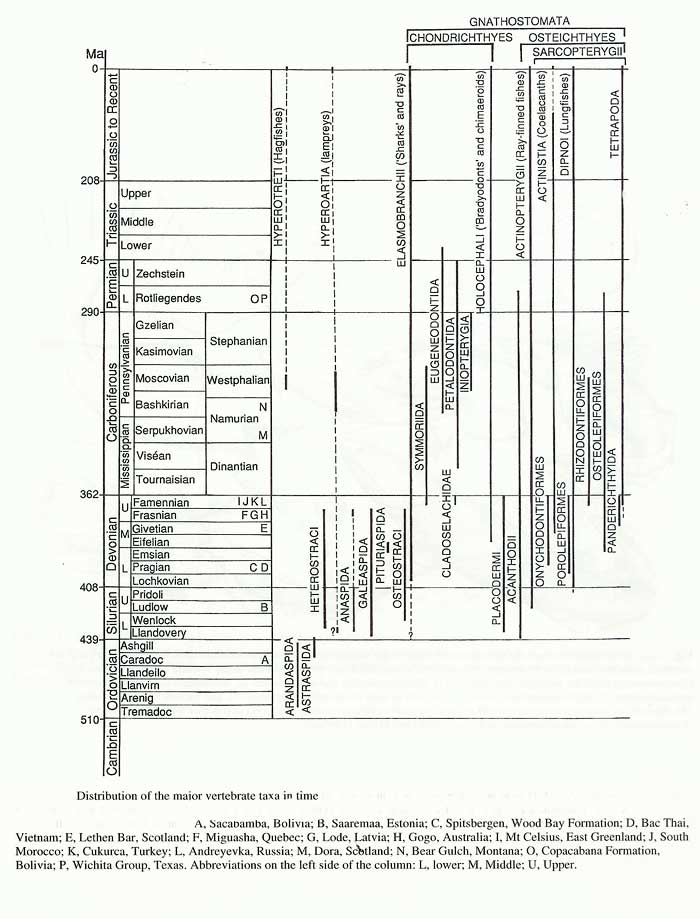
Reproduced with the kind permission of Prof. P. Janvier
The First fish were the
Arandaspida and appear at the beginning of the Ordovician about 470 Myn
years ago. Probably the best known are Sacabambaspis from
Charles Walcott first described the vertebrate fauna of the Harding Sandstone in 1892 and the fauna is now recognized as one of the richest Ordovician vertebrate localities in the world. The fauna is particularly important because it shows that vertebrates began their evolutionary radiation in the early Palaeozoic. The majority of vertebrate fossils from the Harding Sandstone are isolated dermal plates and scales. The only teeth are those that belong to the conodonts

Astraspis desiderata Harding Sandstone, Colorado, USA. Ordovician (M. Caradoc age)



 Fragment and denticles of Astraspis desiderata
Fragment and denticles of Astraspis desiderata

 Dermal plates from Eriptychius americanus
Dermal plates from Eriptychius americanus

![]() Button and pedestal type denticles
Button and pedestal type denticles
 Conodont tooth of Ptiloconus gracilis
Conodont tooth of Ptiloconus gracilis
 Conodont tooth of Chirognathus sp.
Conodont tooth of Chirognathus sp.
 Conodont tooth of Stereoconus robustus
Conodont tooth of Stereoconus robustus

